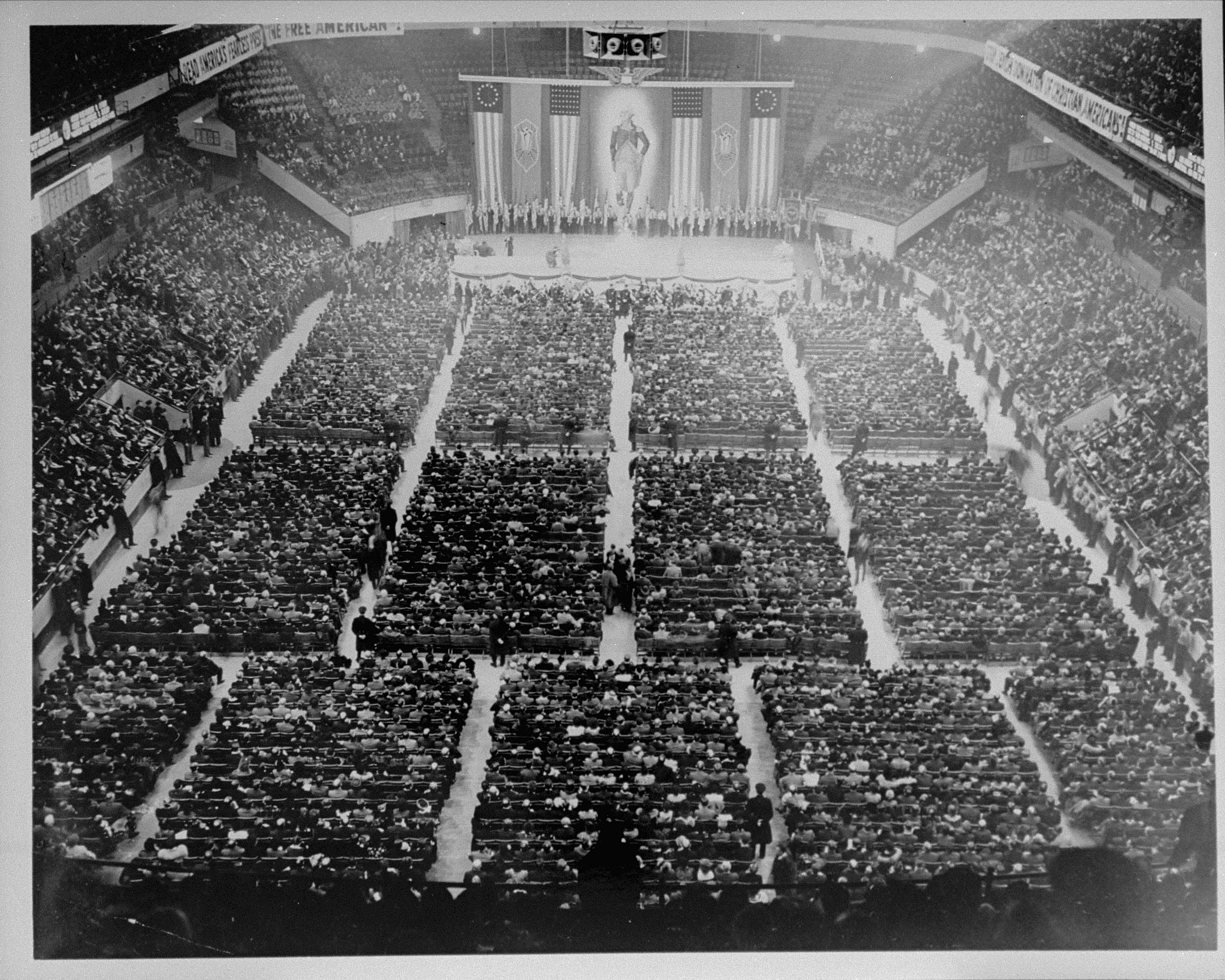
American Nazis Rally in New York City
On February 20, 1939, the pro-Nazi German American Bund drew more than 20,000 people to a rally in Madison Square Garden.
View newspaper articlesDomestic concerns in the United States, including unemployment and national security, combined with prevalent antisemitism and racism, shaped Americans’ responses to Nazism and willingness to aid European Jews. The economic devastation of the Great Depression, combined with isolationist attitudes and deeply held prejudices against immigrants, limited Americans’ willingness to welcome refugees. Many issues that the American public perceived as having a critical impact on their livelihoods, security, and core values vied for public attention during this time and affected the manner in which Americans responded to events at home and abroad.
The German American Bund, a pro-Nazi organization for Americans of German descent, demonized Jews and Communists and dreamed of a fascist America. Fritz Kuhn, the Bund’s leader, tried to portray himself as the “American führer,” though he never received the support from the Nazi Party in Germany that he desired.
The Bund’s membership probably never exceeded 25,000, yet its pro-Nazi propaganda and mass demonstrations sometimes reached large crowds. The Bund even established more than a dozen summer camps around the United States to indoctrinate German American children. Campers wore uniforms of the Hitler Youth and carried Nazi banners.
At its height, the Bund organized a rally at New York’s Madison Square Garden on February 20, 1939 that drew more than 20,000 attendees who booed any mention of President Franklin D. Roosevelt and cheered “Heil Hitler!” Thousands of anti-Nazi protesters filled streets outside the arena. When the prominent journalist Dorothy Thompson loudly shared her opinion that the Bund leader was spewing “bunk,” she was escorted out of the arena by uniformed Bund supporters. When a young Jewish protester inside the arena, Isadore Greenbaum, rushed the stage, stormtroopers violently attacked and subdued him. He was then arrested by police officers.
Later in 1939, the House Un-American Activities Committee chaired by Martin Dies, held hearings investigating the German American Bund which showed clear evidence of its ties to the Nazi government.
Shortly thereafter, Kuhn was convicted of embezzling funds from the organization and was sentenced to prison. In the following years, a number of other German American Bund leaders were interned as dangerous aliens, and others were jailed for various offenses. By 1941 the membership of the organization had waned. After the United States entered World War II in December 1941, the US government outlawed the German American Bund.
Learn More about this Historical Event
- German American Bund (Holocaust Encyclopedia)
- Nazis in America (Americans and the Holocaust online exhibition)
- A Night at the Garden (Marshall Curry Productions, LLC.)
- When Nazis Took Manhattan (National Public Radio)
Bibliography
Bernstein, Arnie. Swastika Nation: Fritz Kuhn and the Rise and Fall of the German-American Bund. New York: St. Martin's Press,, 2013.
Churchwell, Sarah. Behold, America.: A History of America First and the American Dream. London: Bloomsbury Publishing, 2018.
Hart, Bradley W. Hitler’s American Friends. New York: Thomas Dunne Books, 2018.
Search tips
These dates and keywords are associated with this historical event.